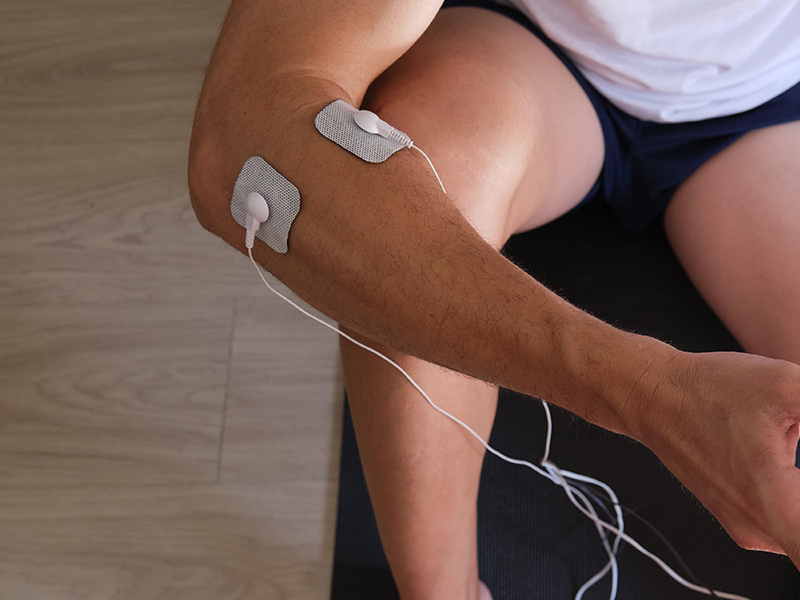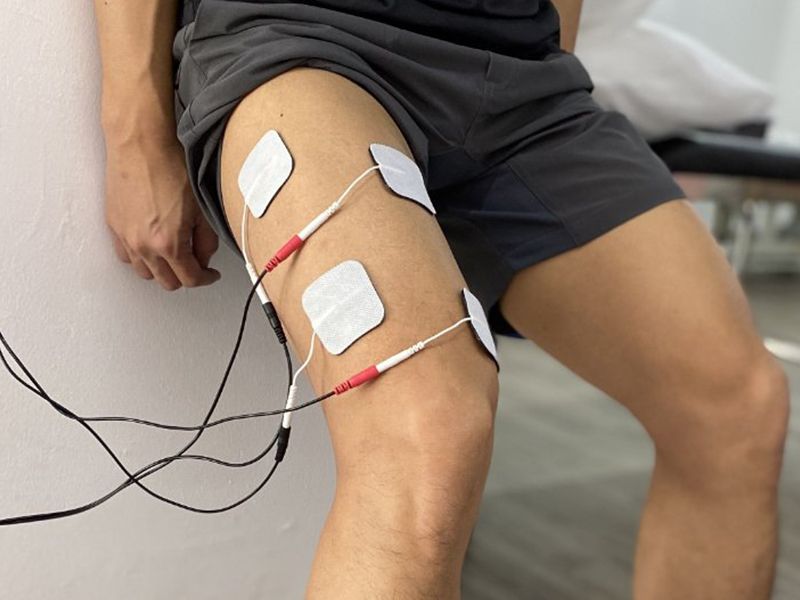From an anatomical point of view, since electrostimulation acts at a peripheral level, it is sufficient for the electrodes to be placed on the muscle to be stimulated to trigger its activation. However, if one wants to achieve maximum effectiveness, it is essential to learn how to position the electrodes correctly to ensure a specific and precise action on the desired muscle area and to optimise the comfort of the electrostimulation session.
Here are the directions to follow.
The electrodes should be applied along the course of the muscle fibres, paying particular attention to the ‘positive’ electrodes, also known as ‘active’ electrodes (usually identified by the red colour of the cable terminals): these should be placed at the level of the muscle centre, which is where the muscle has its largest section.
The reason for this positioning is that this area has the greatest number of muscle fibres and consequently the greatest density of motor plates, which we know is where the induced stimulation acts, generating its excitomotor effect. At the level of the muscle center, the activation will therefore be maximum.
The ‘negative’ electrode (connected to cables with a black terminal), on the other hand, should be placed at the proximal level, i.e. on that part of the muscle closest to the torso: in this location, the muscle to be stimulated generates less movement, as there is a lower density of motor plates.
The need to position the electrodes in this way means that the electric field generated is more localised in the area where there is optimum contact efficiency, while keeping most of the electric field on the muscle itself. This optimises both the comfort of sitting and the effectiveness on the area you are focusing on.
Different positions may still trigger a muscle contraction, but also affect nearby muscle areas, thus reducing the specificity and comfort of the session.


